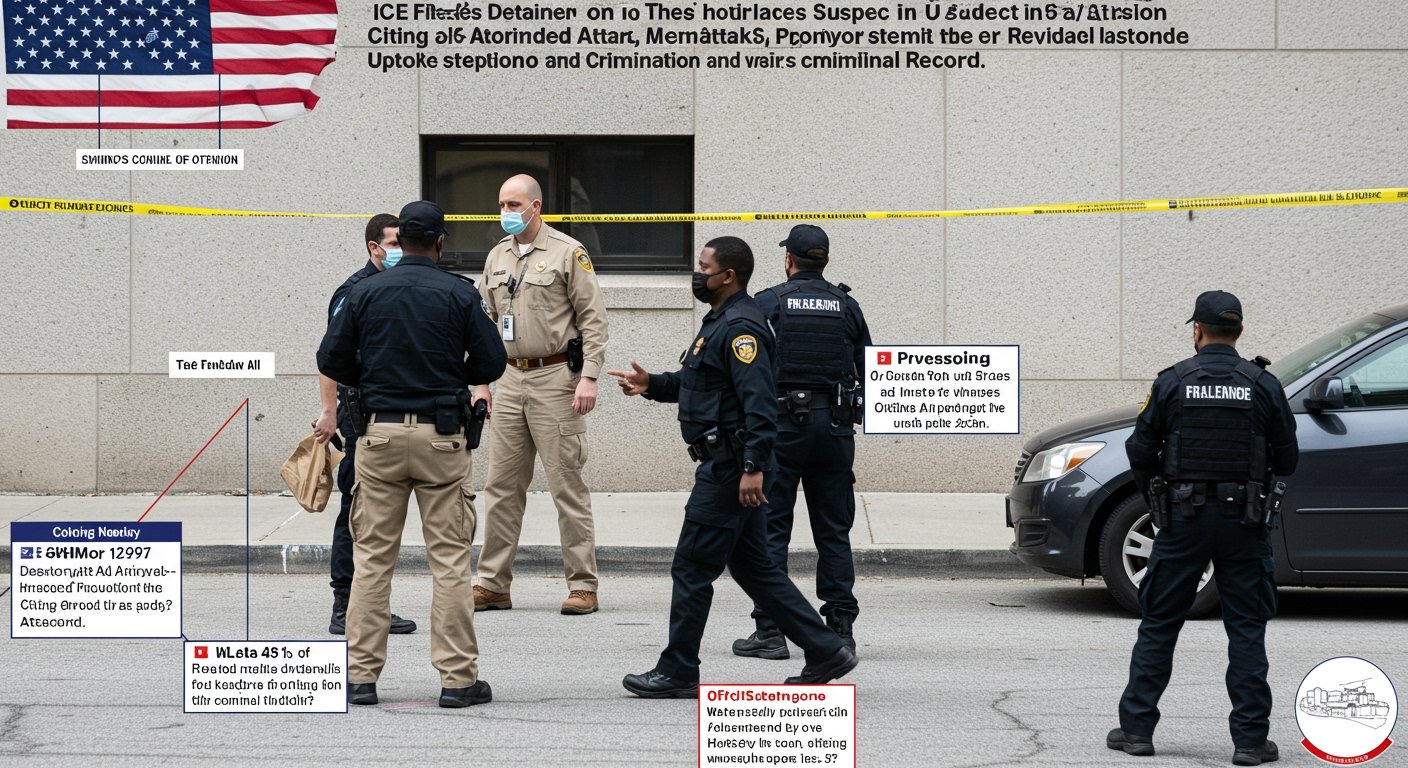Albany, NY – Immigration and Customs Enforcement (ICE) has lodged a detainer against an individual charged with attempting to murder a United States Attorney in New York, according to an announcement from the Department of Homeland Security (DHS). The action targets Saul Morales-Garcia, described by authorities as a criminal illegal alien with a history of offenses across multiple states.
Morales-Garcia is facing charges of second-degree attempted murder in connection with an incident earlier this week. The target of the alleged attack was John A. Sarcone III, the U.S. Attorney for the Northern District of New York. Authorities report that during the incident, Morales-Garcia allegedly lunged at Mr. Sarcone with a knife while yelling aggressively in a foreign language.
Incident and Immediate Response
The alleged assault occurred on June 17. Law enforcement responded swiftly, and the Albany County Sheriff’s Office subsequently arrested Morales-Garcia. He has been formally charged with several felonies related to the incident, including attempted murder in the second degree, menacing with a weapon, and criminal possession of a weapon.
The lodging of an ICE detainer is a standard procedure when an individual in state or local custody is believed to be a deportable noncitizen. The detainer requests that the local law enforcement agency notify ICE before releasing the individual, providing ICE an opportunity to take them into federal custody for immigration enforcement proceedings.
Extensive Criminal History and Prior Deportation
According to DHS, Morales-Garcia is a national of El Salvador and is characterized as a serial criminal. His alleged criminal activity spans several states across the U.S., including Georgia, Pennsylvania, Virginia, and New York. Authorities highlight that this is not his first encounter with the U.S. immigration system.
Morales-Garcia was previously deported from the United States on April 20, 2010. This prior removal followed earlier legal issues and immigration proceedings.
His documented criminal history dates back at least to 2009. In that year, he faced charges in Arlington, Virginia, including a charge for felony grand larceny. While the felony charge resulted in a conviction for the lesser offense of misdemeanor petit larceny, he was sentenced to a 12-month incarceration sentence.
ICE’s previous involvement with Morales-Garcia occurred in 2010. He was arrested by ICE at the Arlington County Jail on theft charges. Following this arrest, he was issued a Notice to Appear, which initiated formal removal proceedings. An immigration judge subsequently ordered him removed, leading to his deportation on April 20, 2010.
Illegal Re-entry and Federal Charges
Despite his deportation in 2010, authorities state that Morales-Garcia subsequently re-entered the United States illegally. According to Assistant Secretary Tricia McLaughlin, Morales-Garcia illegally entered the country twice, was deported, returned, and has since committed crimes across the country, culminating in the recent serious charges in New York.
Given his history and alleged illegal re-entry, Homeland Security Investigations (HSI) in Albany is planning to pursue federal charges. HSI intends to seek a criminal complaint against Morales-Garcia specifically for illegal re-entry into the United States after a prior deportation. This federal charge carries significant penalties and is distinct from the state charges he currently faces related to the attempted attack on the U.S. Attorney.
Broader Context
The case highlights the complex challenges surrounding immigration enforcement, particularly concerning individuals with criminal records who have been previously removed from the country. The detainer lodged by ICE indicates the agency’s intent to take custody of Morales-Garcia for immigration proceedings should he be released from local custody, regardless of the outcome of the state criminal charges. However, the federal illegal re-entry charge sought by HSI means he is also likely to face prosecution in the federal court system.
The incident involving a senior federal prosecutor like Mr. Sarcone underscores the potential risks faced by public officials and brings renewed focus to issues of border security and interior enforcement policies.





